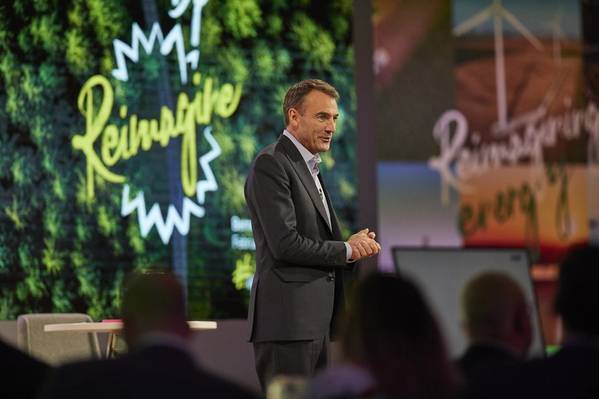
BP's profits hit their highest in eight years in 2021, lifted by soaring gas and oil prices, as the company boosted share repurchases and said it was accelerating plans to cut emissions with increased spending on low carbon energy.
BP's rebound to an annual profit of $12.85 billion after a large loss in 2020, is likely to add to calls in Britain for higher taxes on energy producers to help reduce consumers' energy bills.
"It's all about one thing, one thing only - delivering the strategy that we laid out. That's working," Chief Executive Bernard Looney told Reuters.
In the fourth quarter of 2021, BP's underlying replacement cost profit, the company's definition of net earnings, reached $4.1 billion, exceeding analysts' expectations for a $3.93 billion profit.
That was the largest profit BP recorded since early 2013.
The results were supported by higher oil and gas prices and production, partly offset by weaker oil trading results and the impact of higher energy costs on operations such as refining, the company said.
Natural gas and electricity prices around the world have soared since the middle of last year because of tight gas supplies and higher demand as economies rebounded from pandemic shutdowns.
For the year, BP's $12.85 billion profit compared with a loss of $5.7 billion in 2020, when BP wrote off the value of its oil and gas assets by $6.5 billion following a slump in energy demand.
BP's debt fell to $30.6 billion by the end of last year, down by $8.3 billion from a year earlier.
BP maintained its dividend at 5.46 cents per share and boosted its share repurchases targets to $1.5 billion per quarter from $1.25 billion.
Capital spending will grow in 2022 to a range of $14 billion to $15 billion, up from $12.8 billion in 2021.
LOW-CARBON SPENDING
BP plans to reduce its carbon emissions in the coming decades by increasing its renewable power capacity 20-fold by 2030 and reducing its oil output by 40%, or more than 1 million barrels per day.
While maintaining its plan to spend $14-$16 billion per year until 2025, in a strategy update BP said it will increase the spending on low-carbon and renewables energy, which includes retail and electric vehicle charging, to 40% of total spending by 2025 and 50% by 2030.
These businesses are expected to generate earnings of $9-$10 billion by 2030, BP said, seeking to assuage investor concerns over the returns of low-carbon businesses in the long-term.
BP also accelerated its carbon emissions reduction plans, now aiming to cut to net zero all greenhouse gas emissions from its operations, production and sales by 2050, catching up with rivals including Shell and Norway's Equinor.
"We are accelerating the greening of BP. Our confidence is growing in the opportunities that the energy transition offers," Looney said.
(Reporting by Ron Bousso, Editing by Louise Heavens and Barbara Lewis)